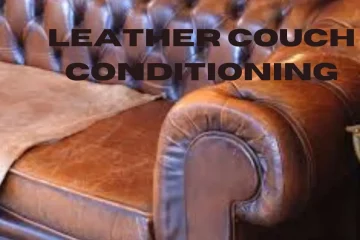As the world grapples with the ongoing pandemic, the importance of maintaining a clean and hygienic living space has become more apparent than ever. While we are all familiar with the need to disinfect surfaces like countertops, doorknobs, and floors, we often overlook an equally important item in our homes: the sofa. Sofas are a prime spot for germs and bacteria to accumulate, particularly if you have children, pets, or regularly entertain guests.
As a result, your sofa gets stained with beer, grease, or oil from the food. Properly disinfecting your couch is not only crucial for maintaining a clean home environment but also for promoting good health and preventing the spread of illnesses. In this article, we will delve into the proper techniques and tools needed to effectively disinfect your sofa, ensuring that you and your loved ones stay safe and healthy.

Necessary Supplies to Disinfect a Sofa Properly:
Disinfecting your sofa, like a leather couch, faux leather couch, suede couch, polyester couch, etc., is an important step in maintaining a clean and hygienic living space, particularly in light of the ongoing pandemic. However, to effectively disinfect your sofa, you need to have the necessary supplies and tools at your disposal.
Vacuum Cleaner:
Using a vacuum cleaner is an important first step in disinfecting your sofa properly. Vacuuming helps to remove loose dirt, dust, and debris, making it easier to sanitize your sofa, fabric couch, leather furniture, upholstered furniture, etc. thoroughly. It is especially important if you have pets or children who regularly use the sofa.

Steam Cleaner:
In addition to using a vacuum cleaner, a steam cleaner is a highly effective tool for properly disinfecting your sofa. Steam cleaners use high-temperature steam to kill germs, bacteria, and viruses without the use of harsh chemicals that can damage your sofa or harm your health.

Water:
While water alone is not enough to disinfect a sofa, it is an important component in the disinfection process. Water is used in combination with other disinfectants or cleaning solutions to sanitize your sofa effectively.
Rubbing Alcohol:
Rubbing alcohol is an effective disinfectant that can be used to kill germs, bacteria, and viruses on your sofa and disinfect leather furniture and cloth couches. It is also an affordable and readily available option for disinfecting your sofa.

White Vinegar:
it’s a natural and eco-friendly option for disinfecting your sofa, as it is a mild acid that can kill germs and bacteria.

Baking Soda:
Baking soda is a versatile household ingredient that can be used to disinfect and deodorize your sofa. It is an affordable and eco-friendly option.

Spray Bottle:
A spray bottle is a useful tool for disinfecting your sofa or sanitizing couch cushions properly, as it allows you to evenly apply disinfectants or cleaning solutions to your sofa’s surface.

Clean Cloth:
A clean cloth is an essential tool for disinfecting your sofa properly, as it allows you to apply disinfectants or cleaning solutions to your sofa’s surface and wipe away dirt, grime, and bacteria.

Hypochlorous Acid (HOCl) Making Kit:
It’s a highly effective disinfectant that can be used to kill germs, bacteria, and viruses on your sofa.
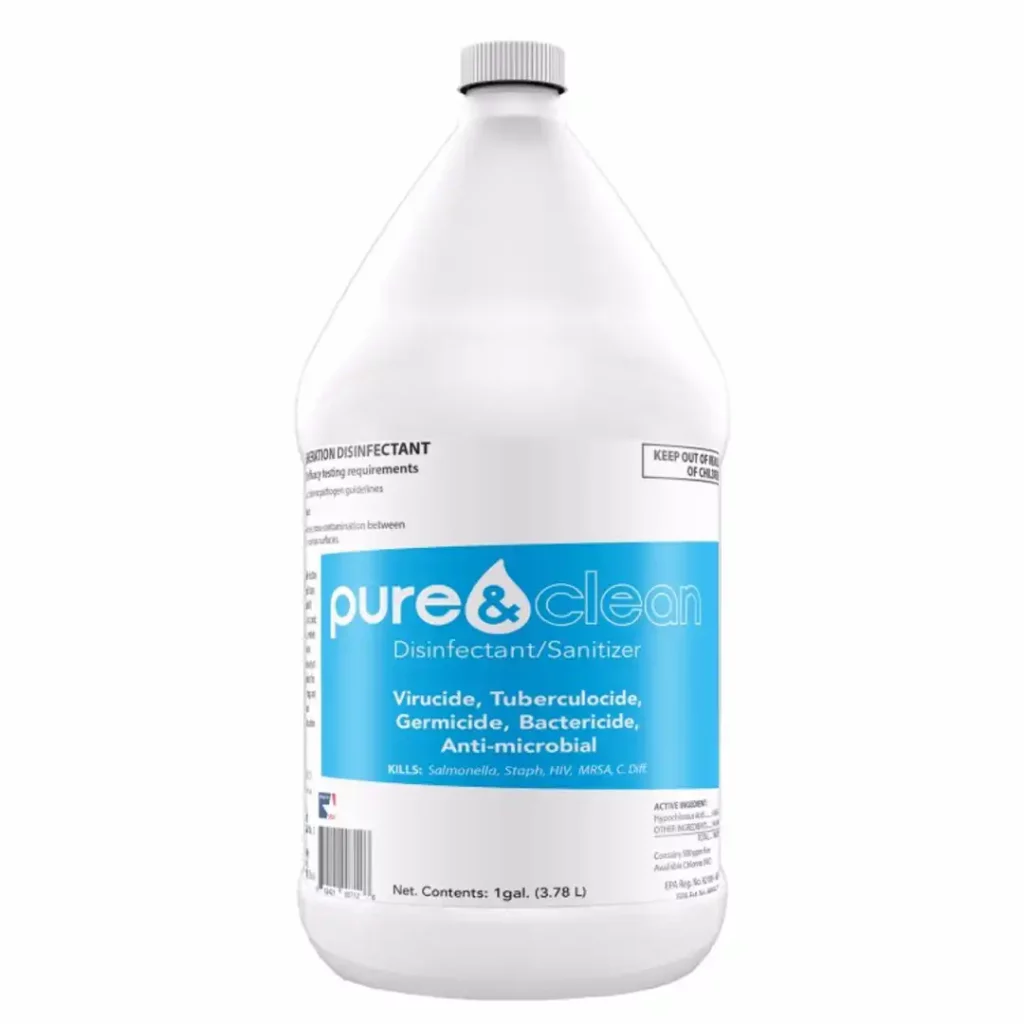
Be Mindful of The Care Tags While Disinfecting a Sofa:
When disinfecting a sofa, it’s important to be mindful of the care tags attached to the fabric. These tags provide valuable information about the materials and cleaning instructions for your sofa, and following them can help prevent damage and ensure the longevity of your furniture.
“S” Tag:
This tag indicates that the sofa should only be cleaned with a solvent-based cleaner. Avoid using water or water-based cleaners, as they can damage the sofa. Always follow the instructions on the solvent-based cleaner carefully.
“W” Tag:
This tag indicates that the sofa can be cleaned with a water-based cleaner. However, it is important to use a gentle, mild detergent and avoid saturating the material with water. Always test the cleaner on a small, inconspicuous area first before cleaning the entire sofa.
“SW” Tag:
This tag indicates that the sofa can be cleaned with either a solvent-based cleaner or a water-based cleaner. Again, always test the cleaner on a small, inconspicuous area first before cleaning the entire sofa.
“X” Tag:
This tag indicates that the sofa should only be vacuumed and not cleaned with any type of cleaner. Avoid using water, solvent-based cleaners, or any other cleaning products on the sofa.
How to Disinfect a Sofa Properly?
A sofa is a place of comfort and relaxation, but it can also be a haven for germs and bacteria, especially if it’s used frequently. To keep your sofa clean and germ-free, it’s important to disinfect it regularly. Here are the steps to disinfect a sofa properly:
Step 1: Remove Loose Dirt and Debris-
Start by removing any loose debris or dirt from the sofa using a lint roller, vacuum cleaner, or soft brush. This will ensure that the disinfectant can penetrate the fabric more effectively.
Step 2: Check the Care Tags:
Check the care tag on the sofa to determine the appropriate cleaning method and disinfectant to use for the specific type of fabric. This will help ensure you do not damage the sofa during the disinfection process.

Step 3: Prepare the Supplies-
Prepare your necessary supplies, which may include a steam cleaner, rubbing alcohol, water, vinegar, baking soda, dish soap, a spray bottle, clean cloths, and table salt.
Step 4: Prepare the Disinfectant According to the instructions-
Depending on the disinfectant you are using, mix it with water according to the manufacturer’s instructions, or pour it directly into a spray bottle.
Step 5: Apply the Disinfectant-
Apply the disinfectant to the surface of the sofa, using a spray bottle or clean cloth. Be sure to follow the manufacturer’s instructions for the disinfectant and allow it to sit on the surface for the recommended amount of time.
Step 6: Hypochlorous Acid is a Great Alternative-
Use hypochlorous acid preparation. It is a powerful and effective disinfectant that can be made at home using a hypochlorite generator.
Making:
To make hypochlorous acid for disinfecting a sofa, you need a hypochlorite generator, distilled or filtered water, high-quality sea salt, and an electric current. First, fill a spray bottle with water, add the salt, and stir until dissolved. Then, use the generator to apply an electric current to the solution to produce the hypochlorous acid.
Use:
To use hypochlorous acid for disinfecting a sofa, simply spray the solution directly onto the surface of the sofa and allow it to sit for the recommended amount of time. Use a clean cloth or paper towel to wipe away any excess solution.
Step 7: Repeat the Process if Necessary:
If necessary, repeat the disinfecting process regularly to maintain a clean and healthy sofa.
Using these necessary supplies can help you disinfect your sofa effectively and safely. Remember to always check the care tag on the sofa and test any disinfectant on a small, inconspicuous area first to ensure it does not cause any damage or discoloration.
You can watch this too:
Homemade Disinfectant Sprays:
Homemade disinfectant sprays are a great way to clean and disinfect your home without relying on commercial cleaning products. By making your cleaning solutions, you can control the ingredients and ensure that they are safe and effective for your family and pets.
Water and Rubbing Alcohol (1:2)-
To make water and rubbing alcohol disinfectant spray, you’ll need a clean spray bottle, rubbing alcohol, and water. Mix 1 part rubbing alcohol with 2 parts water in the spray bottle, shake well, and it’s ready to use!
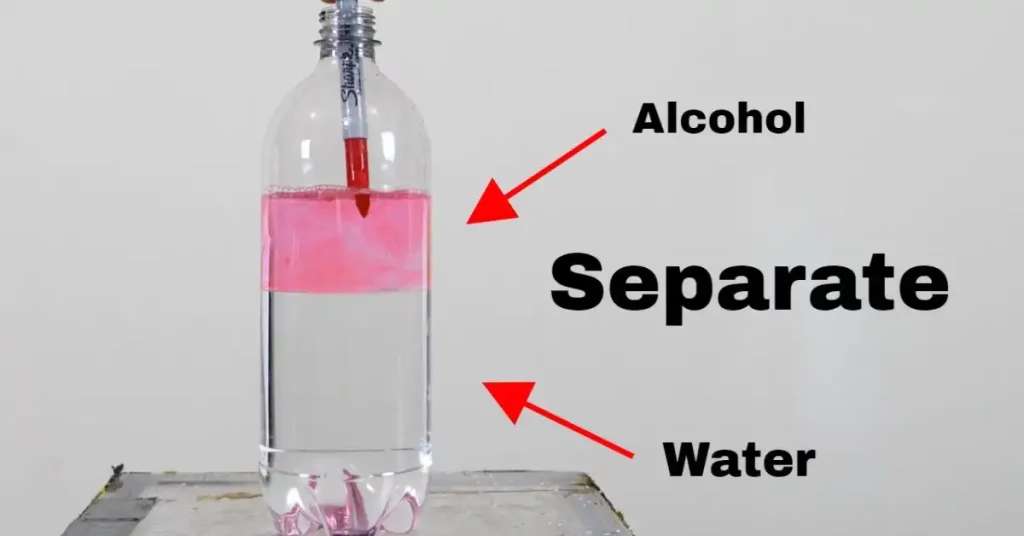
Water and Vinegar(1:1)-
To make a water and vinegar disinfectant spray, you’ll need a clean spray bottle, distilled white vinegar, and water. Mix equal parts water and vinegar (1:1 ratio) in the spray bottle, shake well, and it’s ready to use!
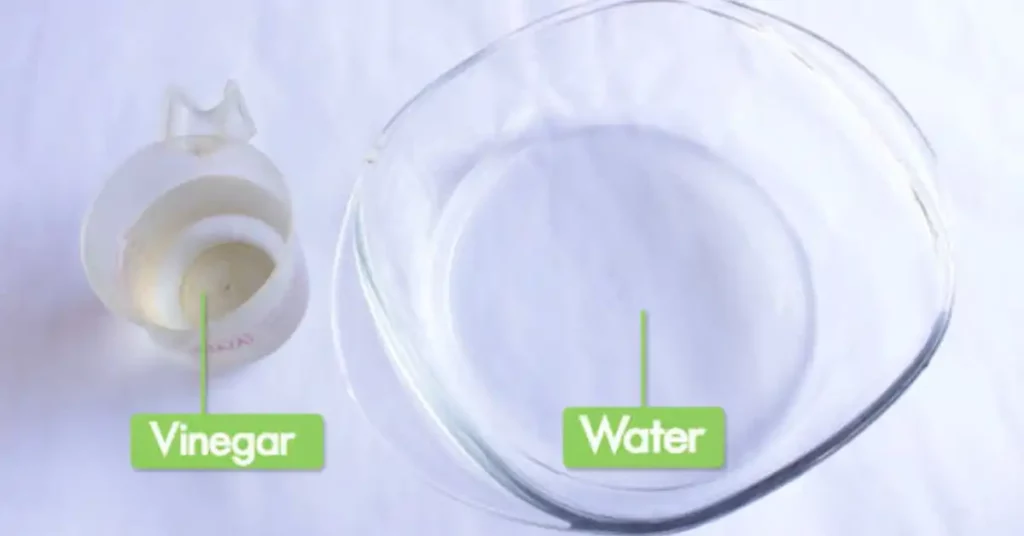
You can explore this:
How to Disinfect a Sofa with Homemade Disinfectant Spray?
If you’re looking for a way to disinfect your sofa without using harsh chemicals, making your homemade disinfectant spray is a great option. By using natural ingredients like vinegar or rubbing alcohol, you can effectively kill germs and bacteria on your sofa while also being environmentally friendly.
Spray the Entire Sofa Damp:
To disinfect a sofa with a homemade disinfectant spray, start by spraying the entire sofa with the solution until it’s damp but not soaking wet. This will ensure the disinfectant can penetrate deep into the fabric and kill any germs or bacteria. Use a spray bottle to apply the solution evenly across the surface of the sofa.
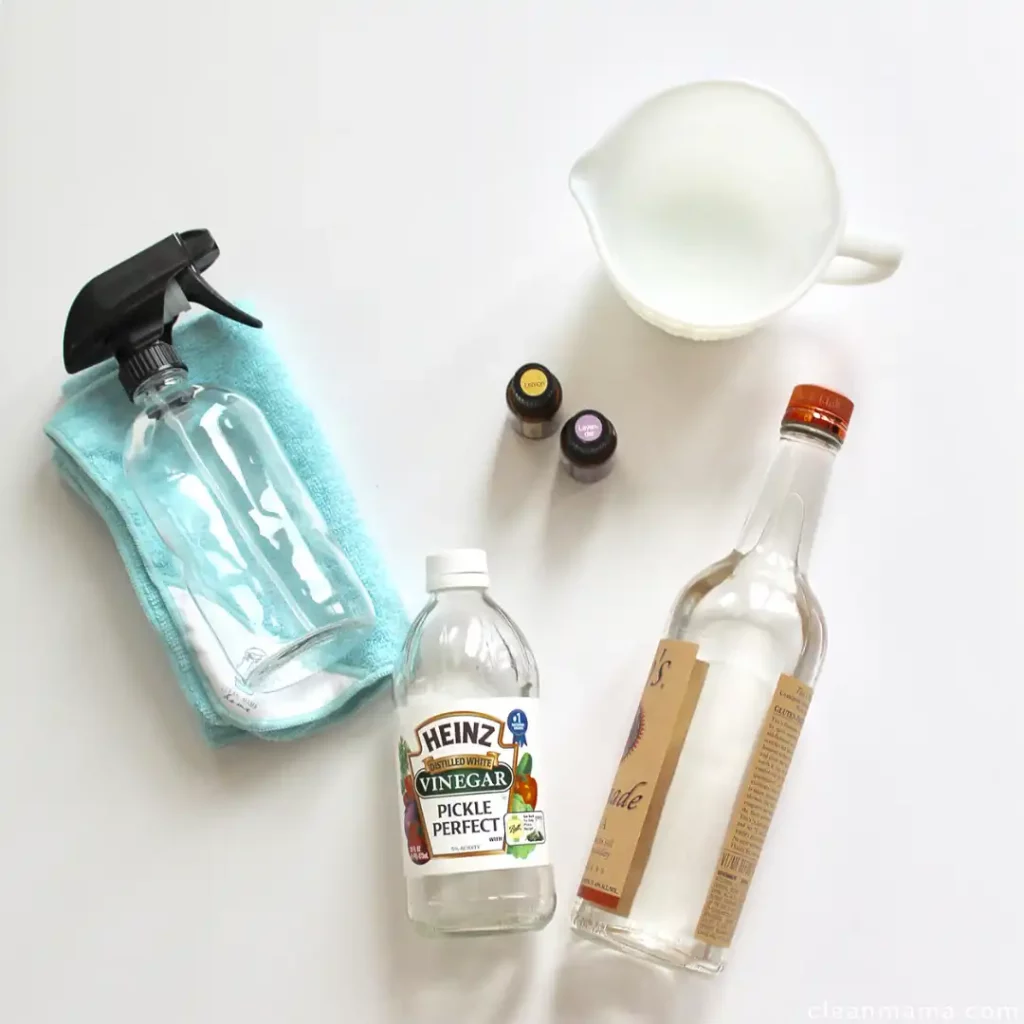
Let it Sit for a While:
After spraying the entire sofa damp with the homemade disinfectant spray, allow it to sit for about 10–15 minutes. This allows the solution to penetrate and disinfect the sofa thoroughly.
Wipe it Away with a Clean Cloth:
After allowing the disinfectant spray to sit for a while, use a clean cloth to wipe away any excess moisture or residue from the sofa. Make sure to go over all surfaces thoroughly, including the sides and back of the sofa.
For a Suede Sofa, Use Dish Soap with Vinegar and Water:
For a suede sofa, it is important to avoid using rubbing alcohol or any harsh chemicals. Instead, you can make a gentle disinfectant spray by mixing dish soap with vinegar and water. Use a soft-bristled brush to gently scrub the solution onto the suede, then wipe away with a clean, damp cloth.
Dampen a Clean Cloth:
After wiping the sofa with the homemade disinfectant spray, dampen a clean cloth with water and wipe down the sofa again to remove any remaining residue or solution.
Apply it to the Sofa:
When using a homemade disinfectant spray to disinfect a sofa, it is important to apply the solution evenly across the surface. Begin at one end of the sofa and work your way to the other, ensuring that the entire surface is covered.
Let it Sit:
After applying the homemade disinfectant spray to the sofa, let it sit for 10–15 minutes to allow it to penetrate and kill any germs or bacteria present on the surface.
For a Polyester Sofa, Use Mild Detergent instead of Dish Soap:
When disinfecting a polyester sofa with a homemade disinfectant spray, use a mild detergent mixed with water and vinegar for a safe and effective cleaning solution instead of dish soap.
How to Disinfect a Sofa with a Steam Cleaner?
Disinfecting a sofa with a steam cleaner is an effective and chemical-free method of sanitizing and removing dirt, grime, and allergens from your sofa. Steam cleaning can penetrate deep into the sofa’s fibers, killing bacteria and viruses and leaving it fresh and clean.

Fill out the Water Compartment:
To disinfect a sofa with a steam cleaner, the first step is to fill the water compartment of the steam cleaner. The amount of water needed will depend on the size of the steam cleaner and the area of the sofa that needs to be cleaned.
Get Rid of the Sofa Cushions:
When disinfecting a sofa with a steam cleaner, the next step after filling the water compartment is to get rid of the sofa cushions. This will allow you to clean and disinfect the entire surface of the sofa, including hard-to-reach areas between and underneath the cushions.
Steam the Sofa According to the instructions of Your Model:
To steam clean a sofa, it’s important to follow the instructions of your specific steam cleaner model. Typically, you will need to turn on the steam cleaner and let it heat up for several minutes. Then, you will slowly move the steam cleaner over the surface of the sofa, working in sections to ensure that every part is thoroughly cleaned.
Let it Rest for a While:
After you have steamed the sofa, it is important to let it rest for a while before using it again. This will give the sofa enough time to dry and for any remaining moisture to evaporate.
Dry up the Sofa Before Using:
After steam cleaning your sofa, it’s essential to let it dry completely before using it again. You can use a clean, dry cloth or a fan to speed up the drying process. Avoid sitting on or placing any cushions back on the sofa until it’s completely dry to prevent mold and mildew growth.
You can watch this:
Things to be Remembered While Disinfecting a Sofa:
Disinfecting a sofa is a crucial aspect of this, as it is a commonly used piece of furniture that can harbor harmful germs. However, to effectively disinfect a sofa, certain things need to be kept in mind. This article will outline the key things to remember while disinfecting a sofa, ensuring a safe and healthy living space.
Don’t Saturate the Sofa:
When disinfecting a sofa, it’s important to avoid saturating it with disinfectant. While it may seem like saturating the sofa will provide better disinfection, it can cause more harm than good. Saturating the sofa can damage the fabric, leaving behind a residue, and even promote the growth of mold and mildew.
Vacuum it Regularly:
Vacuuming a sofa regularly is an important step in the process of disinfecting it. Dust, dirt, and debris can accumulate on the surface and within the crevices of a sofa, providing a breeding ground for germs and bacteria. By vacuuming the sofa regularly, you can remove these particles and prevent the buildup of harmful microorganisms.

Follow a Disinfecting Routine:
Having a disinfecting routine for your sofa can help maintain a clean and hygienic living space. A routine can help prevent the buildup of germs and bacteria that can cause illness and odors.
Use a Gentle Cycle and Mild heat for the Cushions:
When disinfecting sofa cushions, it’s important to use a gentle cycle and mild heat to avoid damaging the fabric or filling. Cushions can be a breeding ground for bacteria, so it’s important to disinfect them regularly to maintain a clean and healthy living space.
Nature is the Best Disinfectant:
Nature can be a powerful disinfectant when it comes to cleaning a sofa. Many natural products such as vinegar, baking soda, and essential oils have powerful antimicrobial properties that can help kill germs and bacteria.
If Anything Goes Wrong, Professionals are there:
Disinfecting a sofa can be a challenging task, and if not done properly, it can cause damage to the fabric, filling, or structure of the sofa. In some cases, even with the best intentions, things can go wrong. If you have tried disinfecting your sofa but something has gone wrong, it may be time to call in the professionals.
Conclusion:
Disinfecting a sofa is an important part of maintaining a clean and healthy living space, especially in today’s world. From choosing the right disinfectant to following a regular cleaning routine, there are many things to keep in mind when disinfecting a sofa. Whether you prefer natural methods or professional services, the key is to find an approach that works for you and keeps your sofa clean and germ-free. By following best practices and taking the necessary precautions, you can enjoy a fresh, clean, and comfortable sofa for years to come.
FAQ:
Why do I need to disinfect my sofa?
Disinfecting your sofa is important to maintaining a clean and healthy living space. Sofas can harbor germs and bacteria that can cause illness and odor, making it essential to disinfect them regularly.
What are the best ways to disinfect a sofa?
There are several ways to disinfect a sofa, including using natural products, choosing the right disinfectant, and following a regular cleaning routine.
Can I use bleach to disinfect my sofa?
Bleach can be an effective disinfectant for certain types of sofas, but it is important to use it with caution.
Is it safe to use vinegar to disinfect my sofa?
Yes, vinegar can be a safe and effective way to disinfect your sofa. It has natural antimicrobial properties and is non-toxic, making it a great alternative to harsh chemical disinfectants.
How often should I disinfect my sofa?
The frequency with which you should disinfect your sofa depends on a variety of factors. In general, it is a good idea to disinfect your sofa at least once a month to maintain a clean and healthy living space.
Are there any natural ways to disinfect my sofa?
Yes, there are several natural ways to disinfect your sofa. Vinegar, baking soda, tea tree oil, and hydrogen peroxide are some of the natural products that can be effective at killing germs and bacteria.
What should I do if my sofa is too delicate to disinfect?
If your sofa is too delicate to disinfect using traditional methods, such as chemical disinfectants or hot water, you may need to seek professional cleaning services.
How long should I wait before sitting on my sofa after disinfecting it?
Some disinfectants may require you to wait several hours or even a full day before using the sofa again, while others may be safe to use immediately after application.



